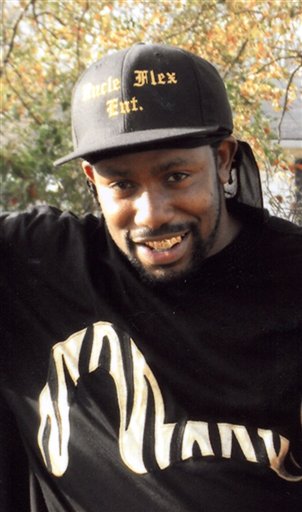NEW YORK – Troops in the United States’ USNORTHCOM ranks appear to have adopted a shoulder patch showing a North American continental design, with an emphasis on United Nations colors, giving evidence of the strength of a plan to integrate North America.

The patch reveals the continent of North America in the orange and blue colors typical to the U.N.
It also carries the image of a mosque to designate the unit’s service in North Africa in World War II.
The insignia patch is displayed on the 5th Army website, the home of U.S. Army North, USARNORTH, the Joint Force Land Component Command and the Army Service Component Command of USNORTHCOM.

The design of the patch with the U.S. eagle image superimposed seems to imply a hierarchy in which the U.S. 5th Army exerts its military command under the authority of USNORTHCOM, with its domain defined as all North America, including the U.S., Mexico and Canada, for the United Nations, as implied in the orange and blue motif.
Army shoulder patch of North American continent in U.N. colors
In 2007, WND published a six-part exclusive series detailing that USNORTHCOM is a U.S. military combatant command created to respond to national emergencies in North America.
WND also has reported that the U.S. and Canada signed a military agreement Feb. 14 allowing the armed forces from one nation to support the armed forces of the other nation during a domestic civil emergency, even one that does not involve a cross-border crisis.
The USNORTHCOM logo similarly displays a continental design, but without the U.N. colors, as is clear from the emblem displayed in the upper left hand corner of the USNORTHCOM Internet homepage:

North America plot
WND reported last month the integration of the U.S. with Canada and Mexico, long deemed by many as little more than a fanciful “conspiracy theory,” actually was an idea promoted by the Council on Foreign Relations and sold to President Bush as a means of increasing commerce and business interest throughout North America, according to a top Canadian businessman.
Thomas d’Aquino, CEO and president of the Canadian Council of Chief Executives, the Canadian counterpart to the U.S. Chamber of Commerce, confirmed in an interview recently published in Canada the accuracy of what WND first reported more than three years ago: The Council on Foreign Relations was the prime mover in establishing the Security and Prosperity Partnership of North America, or SPP.
A close reading of an interview with d’Aquino published by the Metropolitan Corporate Counsel Oct. 4 confirms that the creation of the SPP was not a “conspiracy theory” but a well thought-out North American integration plan launched by the Canadian Council of Chief Executives and the Council on Foreign Relations in the United States.
The interview further confirmed President Obama wants to continue North American integration under the rebranded North American Leaders Summit, providing the North American Competitiveness Council can be recast to include more environmentalists and union leaders.
In the interview, d’Aquino traced the origin of SPP to his concerns after the terrorist attacks on 9/11 that “there was a pressing need to keep the border open for commerce while simultaneously addressing the security needs of the United States and North America as a whole.”
With this goal in mind, d’Aquino reported the CCCE by 2003 “launched an agenda that we called the North American Security and Prosperity Initiative, or NASPI.”
WND reported in July 2007 the term “Security and Prosperity” first was used by the Canadian Council of Chief Executives in a Jan. 23, 2003, report, “Security and Prosperity: Toward a New Canada–United States Partnership in North America.”
Then, in 2003, d’Aquino took the idea to Richard Haass, president of the Council on Foreign Relations.
“I helped convince Richard Haass at the Council on Foreign Relations that we should put together a trilateral task force to look at the future of North America,” d’Aquino said. “We recruited John Manley on Canada’s side, along with William Weld, former governor of Massachusetts, and Pedro Aspe, the former Mexican economy minister, who had been so influential in promoting NAFTA.”
The result was a CFR Task Force on the Future of North America created Oct. 15, 2004, and chaired by Manley, Weld and Aspe, precisely as d’Aquino had recommended to Haass.
The CFR Task Force on the Future of North America issued an executive summary entitled “Creating a North American Community” on March 14, 2005, just days prior to the March 23, 2005, trilateral summit at Waco, Texas, in which President George W. Bush, then–Canadian Prime Minister Paul Martin and then–Mexican President Vicente Fox declared the SPP on their own authority, without any approval from the U.S. Congress.
The final report from the group, called “Building a North American Community,” was issued in March 2005, immediately following the Waco summit.
D’Aquino appears to agree the CFR task force was instrumental to the trilateral summit in Waco in which the SPP was declared, saying in the published interview, “The result of all these efforts [by the CFR Task Force on the Future of North America] was that in 2005, Prime Minister Martin, President Bush and President Fox decided to sign what they called the Security and Prosperity Partnership of North America – the SPP.”
WND has reported that the two reports issued by the CFR Task Force on the Future of North America were the “blueprint” for the SPP declared at the Waco summit meeting.
The final CFR report’s own statement of purpose is: “The Task Force’s central recommendation is establishment by 2010 of a North American economic and security community, the boundaries of which would be defined by a common external tariff and an outer security perimeter.”
Next, d’Aquino confirmed that the North American Competitiveness Council was hand-picked by the chambers of commerce in the three countries, without any legislative approval in any of the three nations, again as WND had reported.
“At their next summit meeting, in 2006, the three leaders invited leading members of the CEO communities in the three countries to provide private-sector input on issues related to competitiveness,” he continued. “From that idea, the North American Competitiveness Council (NACC) was born, to be composed of 10 frontline CEOs from each of Canada, the United States and Mexico.”
How the CFR plan became SPP
“We produced 10 of our most senior CEO’s, while the Americans established an executive committee of 15 representing a broad range of large companies with rotating memberships. The Mexicans produced some heavy-duty people – many names you know well.”
As WND reported at the time, the NACC dominated the third annual SPP summit meeting held in Montebello, Quebec, Canada, in August 2007.
“The first meeting of the NACC with the three leaders took place in Montebello, Quebec, in 2007,” d’Aquino confirmed. “Our Mexican and American counterparts graciously asked us to write the first NACC report. It was very well received, albeit heavily criticized by unions on the left and others as elitist: ‘Why did these people have access to the national leaders while everyone else was left out?'”
He then reported the NACC continued to advise the SPP leaders behind closed doors at the fourth annual SPP summit meeting in New Orleans in April 2008.
“The second meeting of the NACC with the three leaders took place at their summit in New Orleans in 2008 – we were in the room with the leaders for a full hour and a half,” he said.
D’Aquino then confirmed Obama would only want to continue with the SPP initiative if more environmentalists and union leaders were included in the private advisory group that had consisted entirely of business leaders under the aegis of the NACC.
“When President Obama came to power, he faced a lot of pressure to shelve the SPP and not follow through with the NACC because his advisers were looking for an institution that would also involve environmentalists, union leaders, et al.”
Still, d’Aquino continued to argue that the NACC should not be abandoned, a decision WND has reported the Obama administration made.
“But at the North American Leaders Summit in Guadalajara this summer, President Calderon and Prime Minister Harper both told President Obama that the NACC was very useful,” d’Aquino said. “In fact, the Canadian NACC group met with our prime minister and his key ministers for an hour and a half on the eve of his departure for the Guadalajara summit. He said that, regardless of whether the NACC continues formally on a trilateral basis, he welcomes our advice on trilateral issues.”
WND repeatedly has reported the unannounced goal of the SPP was to create a North American Union by advancing the trade integration realized in NAFTA into continental political integration through the creation of some 20 trilateral bureaucratic working groups and the North American Competitiveness Council, or NACC, composed of 30 North American business executives – 10 each hand-picked by the chambers of commerce in the three countries.











